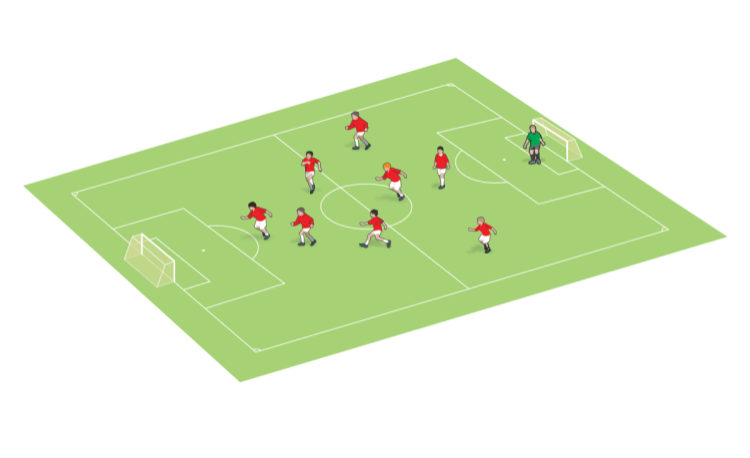Jeremy Tosaya: 'Kids must be centre of your environment'
Former US college coach JEREMY TOSAYA explains to STEPH FAIRBAIRN why your sessions should look like school recess - and how to estimate attention spans
A love for the work of his college coaches was what led Jeremy Tosaya to go into the profession himself.
Jeremy coached the college game for 18 years, including a notable seven-year stint with Dakota Wesleyan University, before moving on to coach in club soccer.
Since Covid, Jeremy’s full-time job is outside of coaching, but he continues in a part-time role as director of coaching for Nebraska State Soccer, and has just taken on a high-school coaching job.
SCW caught up with Jeremy to explore what a good coaching environment looks like, the delivery of coaching points, and how the attention span of players is likely a lot shorter than you think…
SCW: What, for you, is an ideal coaching environment?
JT: "[It’s] where the kids are the center of the environment. Practices aren’t about what the coach has to say.
“One of the comments we use in the courses we teach is: ’when you drive by practice fields, what should it sound like and look like’?
“It should be like recess. They’re kids. It’s a game, there’s a ball, there’s grass. There’s objectives, but they are playing with their friends. And kids should not want to leave, because it’s like recess, right?
“When you drive by a lot of the training sessions here in the US, it’s a coach with a bunch of kids around them, looking at him for 50% of the practice. It’s coach-centered.
“It’s got to be player-centered. I liked soccer as a player because it was about me. I got to make decisions. There wasn’t a ton of timeouts, there wasn’t plays being called.
“Our training environment should be player-centered. It’s got to be about the kids moving and playing with the ball. It’s got to be about them laughing."
SCW: If we direct the play too much, what are we doing to the players?
JT: "Honestly, I think it becomes white noise. Soccer is a game where you can’t pay that kind of attention - and if you do, then you’re probably being distracted from what should be going on in the game.
“When I was coaching college, we were in a pretty heated playoff game. My center-back, just outside the penalty area, played a poor pass which went to the other team.
"I liked soccer as a player because it was about me. I got to make decisions..."
“I had been coaching and teaching coaching courses for a long time. So my ’very educated and well-informed’ brain said, ‘Hey, we are wearing the white jerseys’.
"He turns and looks at me - and, as he’s saying, ‘I know,’ the other team is going [on the attack] right behind him and getting a shot on goal.
“Fortunately, we had a really good goalkeeper who made the save, but I completely took him [the defender] out of the play in the middle of a game with a comment that was not needed at that time.
“He knew what jerseys we were wearing. I didn’t inform him at all with that comment, and I took him completely out of the game. We could have had a very bad situation.
“That’s just a very harsh picture of what we’re doing when we try and coach in a game to players who are on the field.
“My goal is to talk to the players on the bench. Can I educate them with what’s going on on the field?
"Those are the pictures that we’re trying to point to in training - ’Did everybody see that? Why did we do that? Should he have made that pass? Should he have stepped there? Who should have gone with him?
“[It’s] talking to the players on the bench during a game as opposed to talking to the players on the field.
“We’re trying to develop independent problem solvers as soccer coaches.
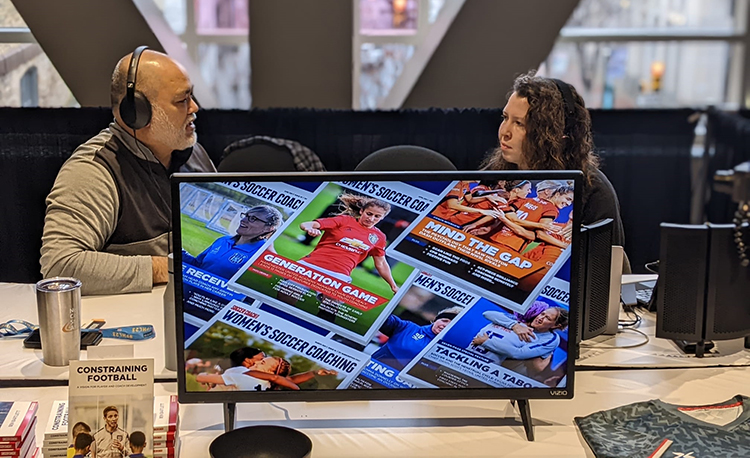
SCW: How much should you be talking in practice?
JT: "You have to be intentional about when you talk and what you’re talking about, instead of just telling them what to do all the time. It depends on what you’re doing and who you’re talking to.
“One company that was talking to us were doing player metrics and saying active participation by players should be 75%. Here in the US, we’re usually around 50%.
“Active participation would be players playing a game versus standing or waiting in lines. So if a player leaves training with less than 75% of active participation, we’ve failed that player.
“But again, it’s for the individual. Maybe I saw a technical breakdown three times in a row in how they receive the ball and so I might pull them off and talk to them about it. You don’t have to stop the entire activity to focus on one player’s technical breakdown.
“With my teams, even when we did bigger scrimmages - 8v8, 9v9, 11v11 - my players knew If I stepped onto the field to talk to an individual player, they kept playing.
"Overall, for each individual player, you want 75%. I don’t know where that stat came from, but it sounds pretty good to me. As a player, I would be wanting to play 75% of practice.”
SCW: Does that approach differ depending on the age group you are working with?
JT: "I think it does. My son’s eight, I’ve coached him since he was an under four. I coached for 20 years and coaching his U4s team was probably the hardest six weeks of my entire coaching career.
“In the United Soccer Coaches diplomas, they say the average child now has the attention span of their age plus seven seconds.
"When I started teaching and coaching, I thought it was their age in minutes. So I called to verify and they’re like, ‘It’s seconds’.
“My son is eight. The attention span for him and his team is eight plus seven seconds. So you get 15 seconds to communicate information to players.
"If you give them a break for water, and I’m going to communicate to them during that break, it needs to be concise and fast. And I should probably check for understanding before we go back into the activity to make sure they comprehended what I said.
“I just got asked to coach the local high school team. I’ve never coached high school. I’ve only ever coached high school-aged players in club. I was thinking ’this is going to be a lot better than coaching those U8s’.
“But actually it’s 14-to-18 seconds, plus seven. So It’s not going to be much different. It’s 25 seconds instead of 15 seconds.”
"They say the average child has the attention span of their age plus seven seconds..."
SCW: Do you often see a temptation for coaches to say everything they know? Or feel like they have to prove themselves?
JT: "I see it all the time in the courses we run. Coaches will bring everybody in and go through their entire list of coaching points before they start the activity. And if attention spans are 25 seconds, they get the first point out and they’ve lost the team after that.
“They’re going through nine or 10 points - ’Today we’re going to work on building out of the back, so outside backs, I want you to get high and all the way to the touchlines, get your hips open to the field. Center-backs, I want you to get to the corners of the penalty area, receive the ball across your body with your outside foot. Goalkeepers…’.
“They’re spending five, six, seven minutes to get their activities going. The only thing that mattered was the first 25 seconds. It’s way too long. I was definitely guilty of that.
“We need to get the activity going. We need to get the kids engaged. My comment to coaches at the courses is, ’stop it when you see something to fix, so you don’t have to go through all those coaching points’.
“If you’ve been working on that stuff, they should know some of them. Stop and fix the things you see as trends or that are breakdowns. Don’t try and fix everything before you even start the activity.
“That’s something we do really poorly here in the US. That’s when you’re driving by a training session and you see the coach standing and the players around them looking completely bored with the session.
Related Files
Newsletter Sign Up
Coaches Testimonials

Gerald Kearney, Downtown Las Vegas Soccer Club

Paul Butler, Florida, USA

Rick Shields, Springboro, USA

Tony Green, Pierrefonds Titans, Quebec, Canada
Subscribe Today
Discover the simple way to become a more effective, more successful soccer coach
In a recent survey 89% of subscribers said Soccer Coach Weekly makes them more confident, 91% said Soccer Coach Weekly makes them a more effective coach and 93% said Soccer Coach Weekly makes them more inspired.
*includes 3 coaching manuals
Get Weekly Inspiration
All the latest techniques and approaches
Soccer Coach Weekly offers proven and easy to use soccer drills, coaching sessions, practice plans, small-sided games, warm-ups, training tips and advice.
We've been at the cutting edge of soccer coaching since we launched in 2007, creating resources for the grassroots youth coach, following best practice from around the world and insights from the professional game.
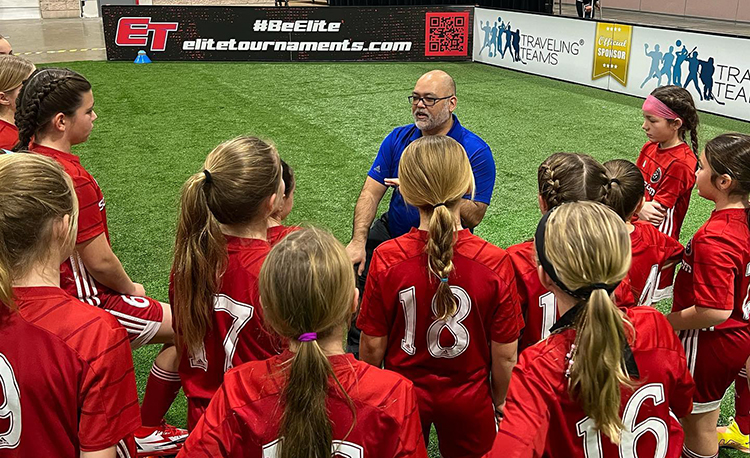

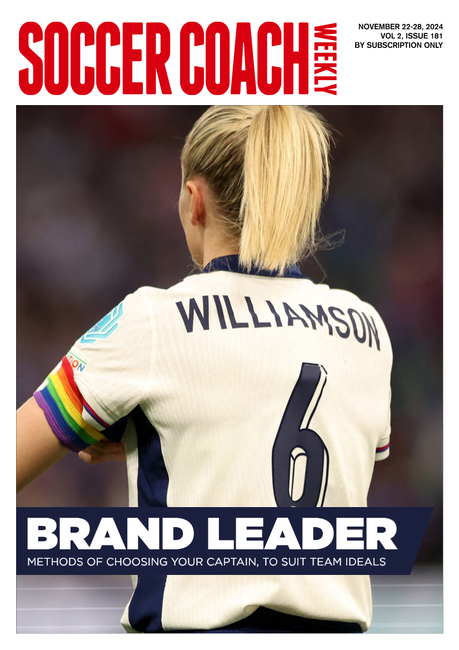

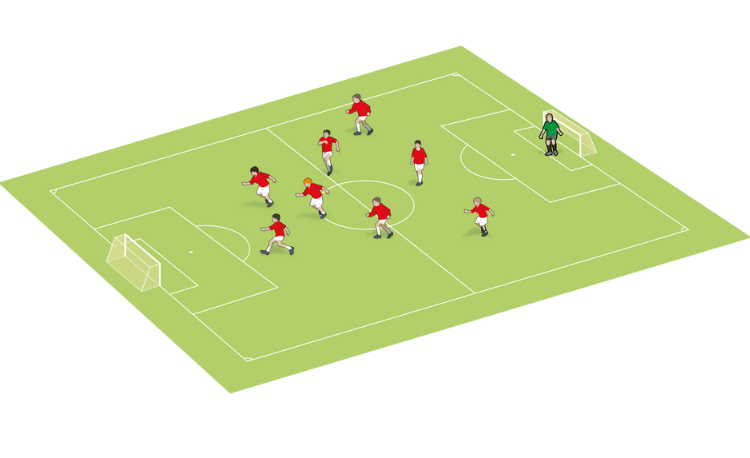
![Small-sided game: Exploiting overloads [Priority 2] Small-sided game: Exploiting overloads [Priority 2]](https://d3rqy6w6tyyf68.cloudfront.net/AcuCustom/Sitename/DAM/036/Exploiting-overloads-ssg-feature.png)
